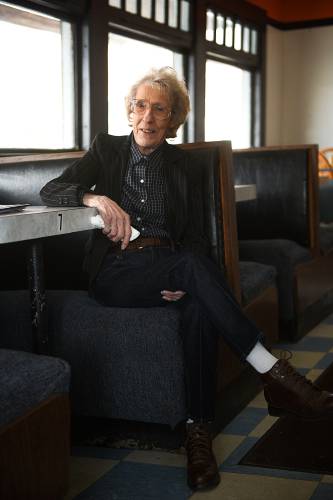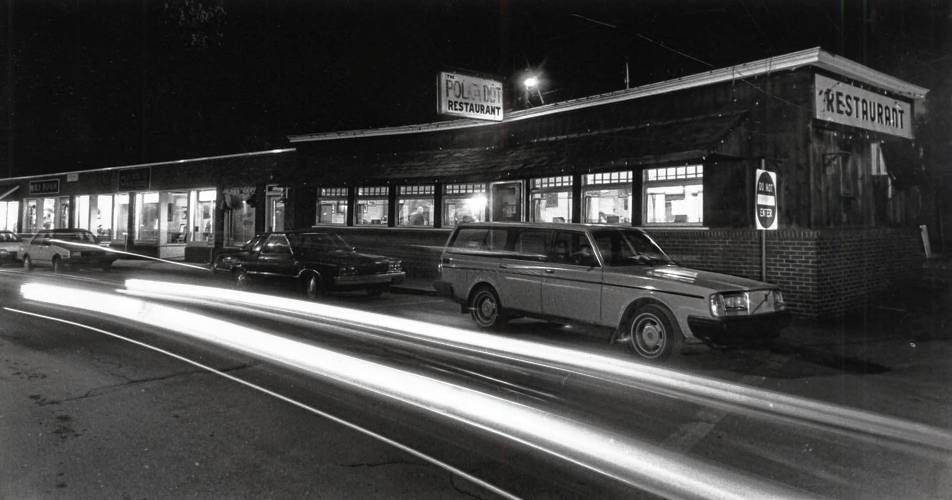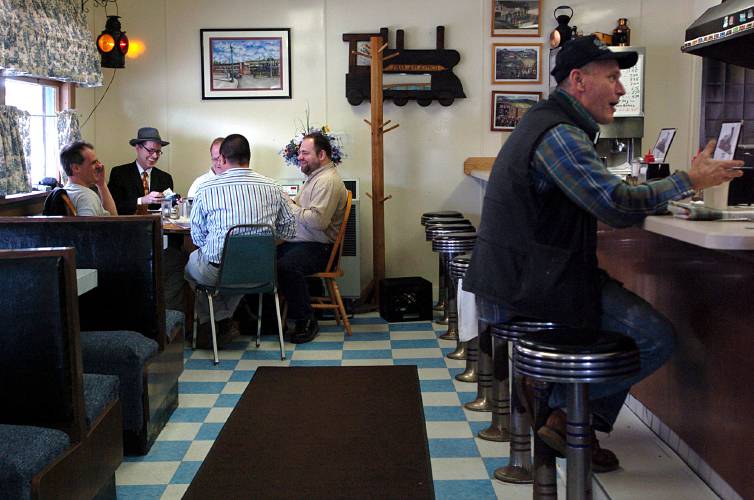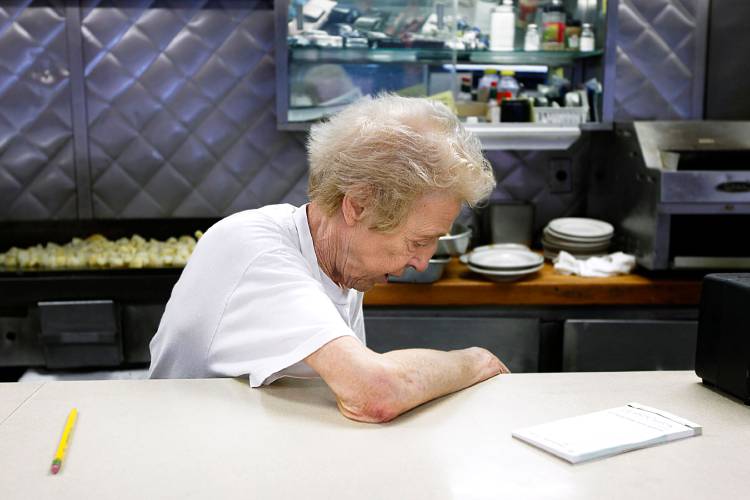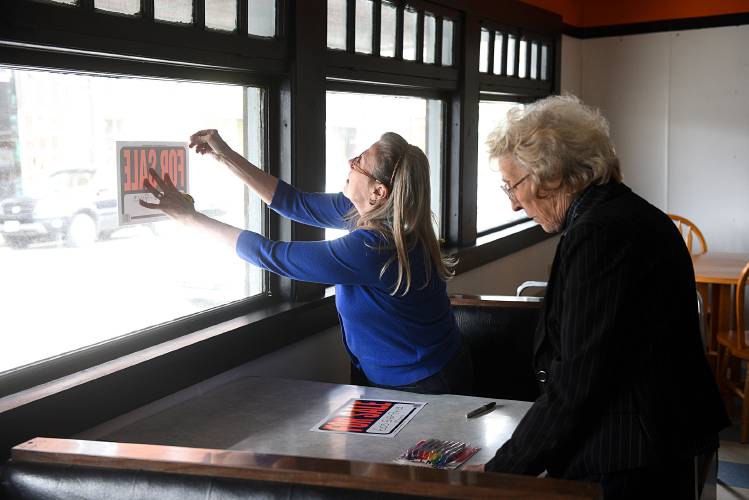A Life: Mary Shatney ‘had become a fixture in White River’
| Published: 02-18-2024 9:01 PM |
Sometimes, a patron would come into the Polka Dot Restaurant and ask, “How much is coffee and a doughnut.”
Mary Shatney knew what that question meant and would point to an open seat. Often, she’d make a plate of food — eggs, toast and home fries, maybe — and bring it to the patron, saying she’d made a mistake cooking an order and could they take care of it for her.
“She would feed them like that so it wouldn’t hurt their pride,” Shatney’s daughter Rhonda McFarland said.
It was personal encounters such as this that made Shatney want to own a restaurant in the first place. She spent most of her working life in restaurants and diners, but she is most closely associated with the Polka Dot. She started working at the White River Junction diner around 1963, purchased it around 20 years later, and ran it until her declining health made it impossible. The diner, which holds down the corner where North Main turns into South Main, was sold in 2015 and is now home to Phnom Penh Sandwich Station.
Shatney died Jan. 11 at the Sullivan County Nursing Home in Unity, after a period of declining health. She was 86.
She was born at home, in Plainfield, the middle of 11 children. Her father, Charles Strobel Sr., was German, and the children spoke German at home until they went to the one-room schoolhouse on Methodist Hill. Shatney was known as the most strong-willed of her siblings, her daughters said.
“My grandmother used to say to my grandfather, ‘I don’t know what I’m going to do with Mary,’ ” Shatney’s older daughter, Sherry Greene, said. Mary’s father called her Jane, for reasons lost to time, and he’d say, “ ‘C’mon Jane, you’re coming to work with me today.’ ” Strobel was a builder, so if he was nailing shingles to a roof, that’s what Mary was doing, too. That started when she was as young as 5 or 6 years old. She was closest to her father, who’d helped her pull through a bout of scarlet fever when she was very young, Greene said.
Another family story holds that she would walk home from school barefoot in the snow, just to get her siblings in trouble. “She was feisty. She was determined. I mean she was a fighter,” Greene, a Quechee resident, said.
Article continues after...
Yesterday's Most Read Articles
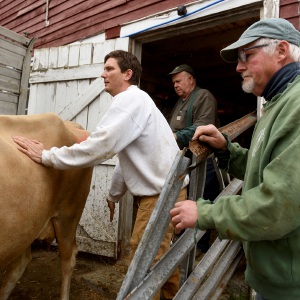 Herd departs Hartford’s last remaining dairy farm
Herd departs Hartford’s last remaining dairy farm
 At Dartmouth, hundreds protest ongoing war in Gaza and express support for academic freedom
At Dartmouth, hundreds protest ongoing war in Gaza and express support for academic freedom
 Claremont removes former police officer accused of threats from city committees
Claremont removes former police officer accused of threats from city committees
 Over Easy: ‘A breakfast without a newspaper is a horse without a saddle’
Over Easy: ‘A breakfast without a newspaper is a horse without a saddle’
After Lebanon High School, Mary worked at the Windsor Diner, at Knapp’s Lunch, also in Windsor, and at the Goodyear Tire and Rubber Plant, making heels. She and her first husband, Ralph Harlow, rented an apartment from the owner of the Windsor Diner and she would send meals home to her family, which included young Sherry and Rhonda.
Mary and Ralph divorced, and Mary moved to White River Junction. Though she kept working at Goodyear, she started waiting tables at the Polka Dot, which had opened in the mid-1950s. She also worked as a short-order cook at the Four Aces Diner, which was then in its original location, at the corner of Routes 4 and 10 in West Lebanon.
At the time, White River Junction was a bustling place, full of workers with jobs tied to the railroads. Twin State Fruit Co., Tip Top Bakery, White River Paper, Swift Meatpacking, Interstate Tire, Bell Telephone, two department stores, JJ Newberry and Colodny’s, and other smaller businesses, made White River Junction the busiest crossroads in the Upper Valley.
The Polka Dot was at the heart of it. For a time, it was a 24-hour operation, and in most of the years Shatney worked there and owned it, it was open from 5:30 in the morning until midnight, staffed by two shifts.
“It was unbelievably busy,” Greene said. “There was never a quiet time at all.”
In the mid-1960s, Mary met Robert Shatney, who worked at White River Paper. They met, naturally, through the Polka Dot. Their son, Robert Jr., was born a year after they were married. The family lived in Cornish.
At the Polka Dot, Shatney was in her element. A good diner is about speed, and there was an art to it, as Shatney’s daughters quickly learned when they came to work with their mother at ages 12 and 13.
The short-order cook worked the grill behind the counter and two waitresses served patrons, one covering the counter and the other the floor, which comprised 12 booths. The floor was the tougher territory, as it had more seats and was more spread out, but it brought the bigger share of tips.
A waitress had to prove she could handle the floor before it became a regular part of her rotation, Greene said. Waitstaff would alternate, working the counter one day and the floor the next. Shatney taught her daughters all the tricks, such as always toting something back to the kitchen, to make every step count, and not putting orders in all at once, so the food wouldn’t arrive all in a cluster.
Shatney’s daughters started the same day, a Sunday when their mother was at the grill. Each served half of the counter seats, where their mother could oversee them. They both continued to work through high school, working the second shift during the week in the summers and weekends during the school year.
Stub Aldrich had purchased the Polka Dot from Polly Stebbins, but found running the place was more than he could manage, Greene said. Shatney purchased it from him in 1982 or ’83, though Aldrich stayed and worked there for a time before opening Stub and Laura’s, in Windsor, where Frazer’s Place is now.
“When the opportunity came that she could buy the Polka Dot, she jumped at it,” McFarland, a Claremont resident, said. After 20 years working there, her regular customers were extended family. “It wasn’t like going to work. It was like going to visit.”
That’s not to say there wasn’t work to do. Shatney often got to the diner at 3 a.m. to make doughnuts and muffins before the doors opened at 5:30.
Her interest in making sure people were well-fed also resulted in extra work. When the diner was going to be closed for a holiday, she fixed up boxes of food for patrons she knew would need them. And she’d send someone to check on regular customers who didn’t come in as expected.
She also fed people who she knew couldn’t pay. She let some patrons run tabs without worrying too much if they were able to settle them.
“My mother made sure that if someone was hungry, she was going to feed them,” Greene said.
The diner was primarily a place for working people, and that made it a kind of crossroads. Workers ate there, but so did people getting off Amtrak’s Montrealer (now known as the Vermonter) and guests at the Hotel Coolidge.
As White River Junction changed, the Polka Dot did, too. Trucking replaced rail, the busy warehouses fell quiet and as the long transition from manufacturing to services and the arts ground on, Shatney suffered losses of her own.
Her husband, who helped handle the diner’s accounts in addition to working at the paper company, died of cancer in the late 1990s. McFarland pulled double shifts, seven days a week so Shatney could be at her husband’s bedside.
As business slowed, and as Shatney aged, the diner’s hours were cut back to a single shift, for breakfast and lunch. The building next door burned down, which closed the diner for several months for repairs.
Shatney was treated for breast cancer herself. As her health declined, the diner’s hours became sporadic.
Before it fell on hard times, though, the Polka Dot welcomed the influx of artists moving to White River Junction, starting in the 1980s. Matt Bucy, an artist who started to redevelop buildings in White River Junction in the 1990s, often ate breakfast and lunch at the diner. The late Sol Levenson, a lanky, gregarious painter, was a regular, and visiting artists stopped in, including the musician Laurie Anderson, on her way to test a Synclavier at New England Digital, just up North Main Street.
“It was a lot of fun to have a place to go like that,” Bucy said, calling the clientele “a great mix of people.”
Like all places that welcome everyone, the diner could also be a bit weird. Bucy remembers seeing a moose walk past the long bank of windows. On another memorable occasion, a man came in wearing nothing but a hospital gown and sat on a stool at the counter. Shatney knew him, of course, and expressed shock.
“He said, ‘The food at the VA is terrible!’ ” Bucy said. So Shatney fixed him a meal.
After working at and owning the diner for most of its history, leaving it was difficult, Greene said. “It was hard for her, because she didn’t have a place to be.”
“I think she was there for so long that Mary Shatney and the Polka Dot were synonymous,” McFarland said. “She had become a fixture in White River.”
Alex Hanson can be reached at ahanson@vnews.com or 603-727-3207.

